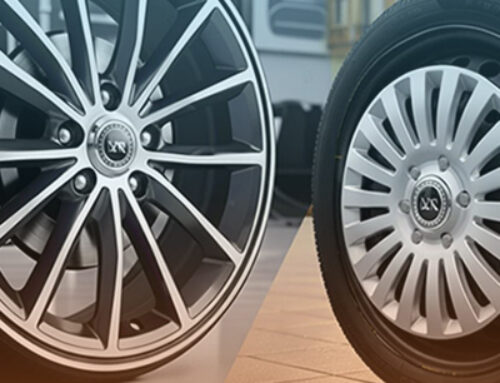What Will Wheels Look Like in the Future?
The automotive industry is advancing rapidly, and wheels—once merely functional—are evolving into high-tech, adaptive components of tomorrow’s vehicles. With innovations ranging from eco-friendly materials to advanced sensor integration, wheels of the future promise a blend of efficiency, performance, and aesthetics. But exactly what will wheels look like in the future? Let’s take a closer look at the trends, designs, and technologies driving the transformation of wheels.
1. The Journey So Far: From Wooden Circles to High-Performance Alloys
Over the years, wheels have transitioned from rudimentary wooden circles to modern alloy compositions that balance strength and weight. Current designs focus heavily on fuel efficiency, durability, and aesthetics, but advances in materials and engineering are opening up even more exciting possibilities for the future.
2. Smart and Adaptive Wheels: A Data-Driven Evolution
Imagine wheels that actively adjust to road conditions, speed, and weather. Future wheels may feature sensors that detect tire wear, air pressure, and terrain, adjusting their performance on the go. This technology could drastically improve vehicle safety and fuel efficiency. Additionally, these “smart” wheels could integrate with a vehicle’s onboard computer, providing real-time data on road grip and tire health, particularly useful for electric and autonomous vehicles.
3. Eco-Friendly and Sustainable Materials
In response to growing environmental concerns, wheel manufacturers are researching materials that minimize ecological impact. Traditional rubber and metal alloys may give way to bio-based materials or recycled compounds, reducing environmental impact across the production lifecycle. Innovations like renewable polymers and 3D-printed wheels are at the forefront, presenting eco-friendly options that also reduce manufacturing waste.
4. Innovative Shapes and Non-Pneumatic (Airless) Tires
Futuristic wheel designs might move beyond the traditional round shape. Some companies are experimenting with spherical wheels for omnidirectional movement, which would allow cars to move in any direction—ideal for tight urban spaces. Airless tires, or non-pneumatic tires (NPTs), are also on the horizon, designed to prevent flats and reduce maintenance. These puncture-proof designs are built with a unique mesh-like structure that promises consistent safety and durability on the road.
5. Enhanced Aesthetics and Customization with 3D Printing
Future wheels will likely go beyond functionality, offering unique opportunities for personalization. Through advancements in 3D printing, drivers may soon be able to design wheels that reflect their style and performance needs. Customization might even include programmable LED displays on wheels, adding a visual element that could communicate with other drivers or pedestrians, creating a new layer of aesthetic appeal in vehicle design.
6. Charging and Connectivity: Powering the Next Generation of Vehicles
Innovations in energy efficiency mean that some wheels may harness frictional heat and convert it to electric energy, providing additional power for electric vehicles (EVs) and extending their range. As wheels evolve, they’ll become increasingly connected, equipped with sensors that can assess road conditions, communicate with other vehicles, and deliver data that enhances driving safety and efficiency.
7. Trends to Watch: Industry Movements and Preferences
Several trends are shaping the future of wheels:
- Electric Vehicles (EVs) are pushing designs toward lighter, more aerodynamic wheels to optimize battery performance.
- Off-Roading and Rugged Terrain demand durable materials and designs, aligning with the popularity of pickups and SUVs.
- Sustainability remains a major driver, encouraging new production methods and the use of renewable resources.
8. Future Challenges in Wheel Innovation
While the potential for futuristic wheels is exciting, several challenges remain. Manufacturing costs for new materials and technologies are still high, which could limit widespread adoption initially. Additionally, as wheels become increasingly digital and connected, cybersecurity will become essential to prevent potential vulnerabilities.
The Road Ahead
So, what will wheels look like in the future? The answer lies in a blend of technology, sustainability, and design innovation. Wheels will not only continue to serve as functional components but will transform into dynamic assets that enhance safety, energy efficiency, and driver experience. With the rapid pace of innovation, wheels are poised to become integral to the future of mobility, reflecting both our changing transportation needs and our drive for sustainable, adaptable solutions.






